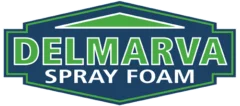Contractors and homeowners have a lot of options at their fingertips when it comes to choosing insulation materials. There are some things you should know about the applications and benefits of each.
Whether it’s fiberglass, cellulose, or spray foam insulation, there is a lot to consider before making your decision. After all, not all materials are created equal. Some are better at reducing heat transfer or easier to install, while others are less durable or more suitable for filling odd cavities.
Understanding the situation you are building in is the first step when considering your insulation material. From there, you can narrow your search based on the needs of your specific project.
How Insulation Works
It also helps to understand the science of what you’re trying to accomplish with any insulation project. 
Convection describes the circulation of heat through liquids and gasses. Think of the air inside the home that you want to control. Conduction is the movement of heat through materials, like when the handle of a cast-iron skillet gets hotter as you cook.
Your environment wants to find balance and, if left to its own devices, convection and conduction will allow warm air to flow into cold air until the air inside your home and the air outside your home are the same temperature. In the winter, warm air flows out of your home into the cold, and in the summer, warm air flows into the cool rooms of your building.
Insulation and air sealing slow this process. They do this in two ways:
- Convection: Creating an air seal that hinders the flow of air in either direction obstructs the flow of warm air toward cold air.
- Conduction: Introducing density into the solid structures that are in contact with the air — called its thermal resistance value, or “R-value” — slows heat transfer.
Some insulation products can do both in one step Here are some of the most common types of insulation and their benefits.
What Is Fiberglass Insulation?
Fiberglass insulation is made from molten glass that is spun into extremely fine glass fibers. It is one of the most common insulation materials and comes in multiple forms including batts and loose fill.
The Benefits of Fiberglass
Because fiberglass insulation is so common, it is also relatively inexpensive. Batt form is commonly installed in open cavities during construction. If not properly installed, they can lose R-value. It is important to have insulation installed by a professional insulation contractor.
One of the drawbacks of fiberglass insulation is that it can retain moisture. If your house floods, your roof leaks, or your pipes burst, you might need to replace your insulation if it does not dry. Another challenge is that fiberglass is not an airtight material, so homeowners and builders choose to add air sealing before installing fiberglass insulation.
What Is Cellulose Insulation?
Cellulose insulation is a paper- or wood-based product — often made from recycled newspapers, cardboard, or other common types of paper waste — that is blown into cavities to improve a building’s energy efficiency. The most common form is loose-fill cellulose. This dry material is blown with a machine behind drywall or onto attic floors.
The Benefits of Cellulose
The main value of cellulose insulation is that it can be used to fill finished spaces. It also can fall into place within odd shapes and around wires, pipes, and ducts — which wouldn’t be possible with a more rigid material. Fiberglass insulation can be used in lieu of cellulose insulation.
What Is Spray Foam Insulation?
Spray foam insulation is typically made from polyurethane. Closed-cell and open-cell are the two types available to homeowners, each with their own benefits. Closed-cell foam is denser and uses gas to expand into cavities. Open-cell foam is lighter and has a softer texture.
The Benefits of Spray Foam
Spray foam is typically considered more effective than other types of insulation because it can act as an air sealer in addition to slowing heat transfer. Both open-cell and closed-cell spray foam are beneficial and should be used in the right environments. A professional insulation contractor can help.
Which Insulation Is Right for You?
Every project is different, and homeowners always need to weigh the various costs and benefits associated with their options. But barring a few guidelines about moisture, it often comes down to the cost of materials and labor. Some materials end up being out of the budget, and others just require more time and effort than you want to invest in the project.
Fiberglass insulation might be the best option if budget is a strong consideration. It’s less expensive than premium products like spray foam. Fiberglass can be installed in closed cavities (loose fill) or open cavities (batts). For the highest performance, fiberglass insulation should be combined with air sealing.
Cellulose insulation is a loose-fill product that can be used in closed or open spaces. Fiberglass insulation can be used in the same way as cellulose.
Spray Foam is a premium insulation product. It combines thermal resistance and air sealing in one step. While spray foam is a premium product, it will save you the most in the long run in the form of lower energy bills. It can also improve building stability.
Delmarva Insulation
Regardless of which material is the best option for your project, it’s always helpful to have the support of trained professionals. Contact our team today to talk with a skilled insulation installer so you can kick off your project with confidence.

